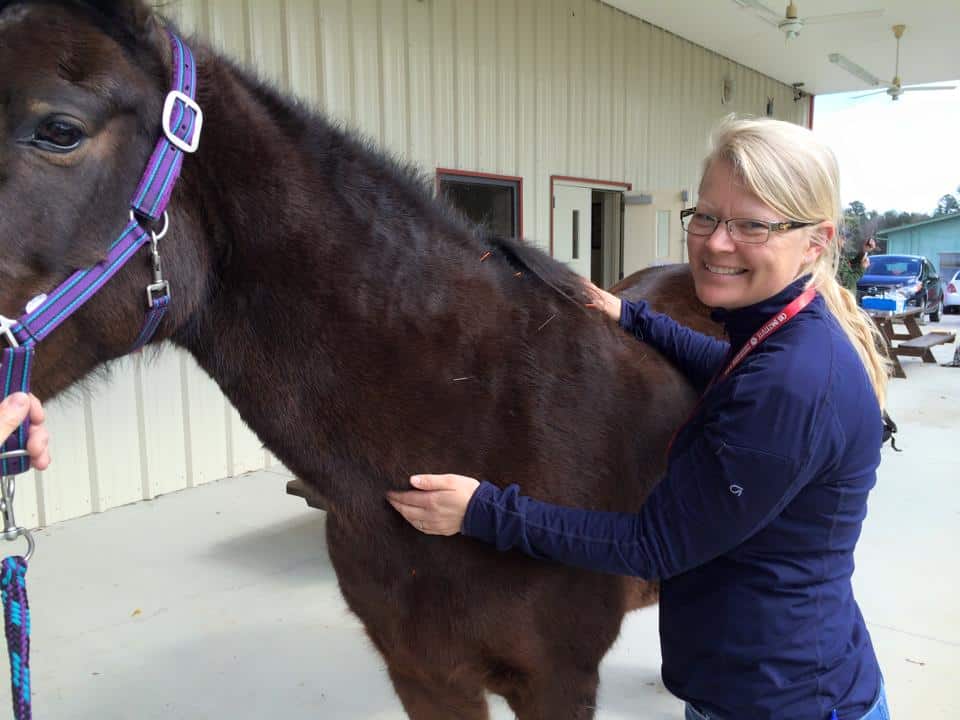General Anesthesia for Senior Horses: What Are the Risks?

Q. My 21-year-old mare needs to have an aggressive squamous cell carcinoma removed from her eyelid. My veterinarian is proposing she undergo a recumbent surgery in which she’d be fully sedated, and he’d like it done at a referral hospital. I know senior dogs are at higher risk when under anesthesia for things such as dental cleanings. Are there similar risks for older horses that need to be anesthetized for surgery? What precautions, if any, are taken when seniors undergo sedation for surgery?
A. Removal of an aggressive squamous cell carcinoma on an eyelid can be complicated in horses of any age. Because of the location of nerves, the proximity to the eye, and the normal movement of the eyelid, surgical removal of a mass presents several challenges. Your veterinarian is recommending having this procedure performed under general anesthesia with the horse positioned recumbent on a surgical table in a referral hospital to minimize some of those risks.
Anesthesia of horses has higher risks than most domestic species because of their large body mass (including the significant weight and anatomy of their digestive tract), the effect of body position on their ability to ventilate, and the fact that horses must stand within a couple of hours of anesthetic induction. Horses’ flight instinct and large body mass prevent them from maintaining recumbency safely for prolonged periods. Studies have found that anesthetic duration of greater than three hours in horses significantly increases the risk of complications.
Field anesthesia is often used for short procedures such as castration, wound repair, bandaging, and minor medical procedures. In these situations, veterinarians use short-acting drugs for sedation, induction, and maintenance of anesthesia. Horses are allowed to stand on their own as they wake and are often back to their normal routine within a couple of hours of the procedure. General anesthesia in a hospital setting uses most of the same medications as field anesthesia but includes inhalant anesthetics (isoflurane or sevoflurane) and controlled or assisted ventilation with supplemented oxygen to produce a consistent plane of anesthesia and adequate breathing. Veterinarians often administer intravenous fluids in these situations and monitor blood pressure, heart rate, and heart rhythm.
For an older horse, we recommend general anesthesia with oxygen and monitoring of vital signs. Your veterinarian should evaluate the horse’s preoperative blood work for any abnormalities in organ function or hydration. Most referral hospitals have a rope-based system to assist horses during recovery. This process involves two ropes run through rings high in the recovery stall walls; one is attached to the halter and the other to the tail, to allow handlers to assist the horse while he stands. These ropes give the horse additional strength in the hind end and stability in the front end while attempting to stand. For more complicated cases, some hospitals have pools in which horses can recover. These systems require more people and technology and are often reserved for horses after limb fracture repair. These patients are at the highest risk of injury when standing after anesthesia.
Anesthesia of any veterinary species can be scary because of species variation in response to medications, handling complications, and the fact that we are unable to explain to the patients what is going to occur. When concerns exist about the age or health status of a patient that must undergo a procedure, a referral hospital that can perform general anesthesia in a surgical room and assist with recovery will minimize risks and give the patient the best chance for a positive outcome.

Written by:
Lori Bidwell, DVM, Dipl. ACVA
Related Articles
Stay on top of the most recent Horse Health news with











